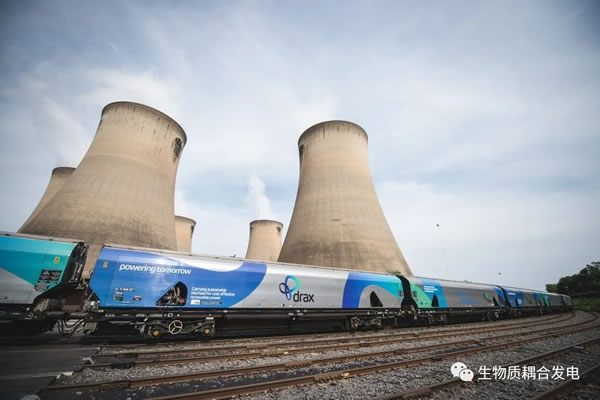


Drax Power Plant Operation 2: Railway System
date:2020-07-28 15:21:04
The biomass power supply of the Drax Power Plant in the United Kingdom has exceeded 13 billion kWh for three consecutive years, its annual biomass fuel consumption has exceeded 7 million tons, and the daily transportation volume of biomass fuel has exceeded 20,000 tons. Automobile transportation is far from satisfying the production of power plants, and the railway system has become an indispensable link in its operation system. So, what is the rail system used in the Drax Power Plant?
Nowadays, the railway system of some countries is usually mocked as unreliable or chaotic, but in fact it is still an important part of the life and economy of many countries. When railway transportation first really arrived in the 19th century, it suddenly allowed goods and people from all over the world to travel quickly and long distances. It reshaped people’s perception of the country’s geographic location, liberated people’s movement, and accelerated industry. development of. However, with the passage of time, the role of the railway has been significantly weakened, mainly due to the development of the aviation industry and road traffic, but this does not mean that it has completely lost its importance. For the largest biomass power plants in the UK and even the world, railways are still an indispensable part of the Drax Power Plant and its surrounding areas.

Before the construction of the Drax power plant and the nationalization of the railway, the village of Drax had two different railway lines running through it: the Northeast Railway (NER) Selby to Gul line, and the Doncaster to Hull of the Hull and Barnsley Railway. Seoul line. But these two pass through two different stations in the same village of Drax, Drax Hales and Drax Abbey. With the nationalization and modernization of British railways, the Drax Abbey station was closed to passengers in 1931 and cargo transportation was closed in 1959. In 1964, the Drax Hales station was also closed in a plan later called "Beech Axe". Andrew Christian, head of the flue gas desulphurization and by-products department of the Drax power plant and a historical expert in the area, explained that the closure of the railway system at that time originated from a famous review of British railways in the 1960s, which resulted in the closure of a large number of lines deemed uneconomical. Because oil was cheap at the time, people were using cars more and more, highways were also being built, and no one really foreseen the railway demand needed to serve the Drax power plant in the future.
In the 1970s, with the planning and construction of the Drax power plant, the new Selby coalfield put forward new demands for railway transportation. This allowed the reopening of the Hull and Barnsley lines, which closed the Drax Abbey station in 1931, four miles from the intersection where Hansol was restored. It was called the Hansol Hub and later changed its name to the Drax Power Plant Branch Hub Station. The Drax Power Plant built a railway system called a "merry-go-round", which allowed trains to go around the power plant non-stop and place coal (and later biomass fuel) down.
The so-called "carousel" train originally consisted of 40 four-wheel hopper cars. They are much smaller than the trucks that transport biomass from ports to power stations today. Each four-wheeled hopper car can load 33 tons of coal, which is automatically released by a machine next to the track. With the development of the Drax Power Plant, the railway system serving it also changed. In 2013, with the introduction of batches of biomass fuels and the introduction of new dual-track and unloading facilities, the upgrade of the railway system was further expanded.
Because the biomass fuel trains are specially designed, these trains are much longer than their four-wheeled hopper car predecessors, reaching 18.2 meters in length, and their capacity is 30% larger than that of coal trucks. This means that the 25-carriage train that transports biomass fuel from the ports of Tyne, Hull, Immingham and Liverpool to the Drax power plant is more than 400 meters long.
This may be a far cry from the heyday of railways crisscrossing them, but railways are still an important part of the region. Although the original railway lines in this area have been asleep for 50 years, their lasting impact on the surrounding landscape is still clearly visible. Many of the dams and bridges in and around Drax came from the early railway line, and most of the A645 road built in the early 1990s runs along the railway route from Nell to Gol. At the end of this section, the next section introduces the train that transports biomass fuel.
Contact Us
Resolve Your Problems within One Minute



Address:No.11 Minhe Road, Private Industrial Park, Development Zone, Kaifeng City
Inquiry
If you have any questions about our company and products, please contact us immediately. Any inquiries and Suggestions would be appreciated.
We will keep your information confidential.








